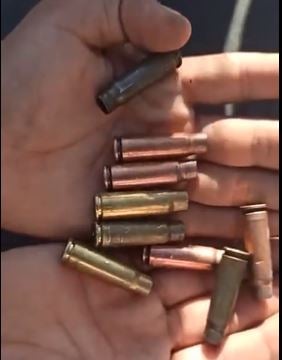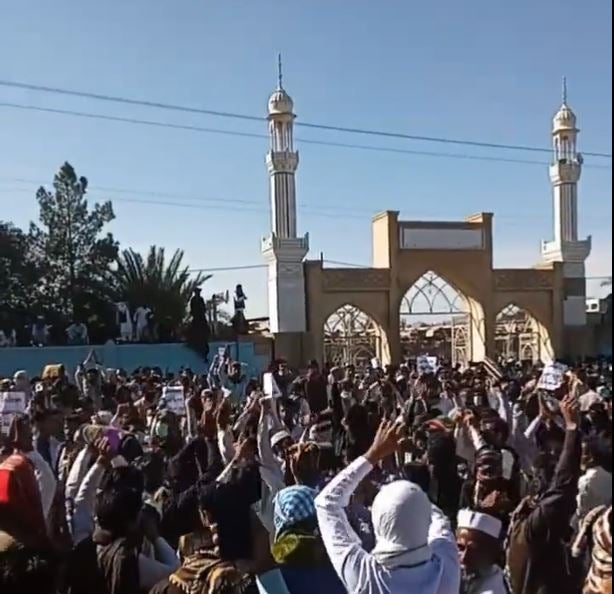Zahedan violence: Iran regime forces fatally shoot worshippers after prayers as protests widen
Violence marks second alleged massacre against ethnic Baluch minority in less than a month
Your support helps us to tell the story
From reproductive rights to climate change to Big Tech, The Independent is on the ground when the story is developing. Whether it's investigating the financials of Elon Musk's pro-Trump PAC or producing our latest documentary, 'The A Word', which shines a light on the American women fighting for reproductive rights, we know how important it is to parse out the facts from the messaging.
At such a critical moment in US history, we need reporters on the ground. Your donation allows us to keep sending journalists to speak to both sides of the story.
The Independent is trusted by Americans across the entire political spectrum. And unlike many other quality news outlets, we choose not to lock Americans out of our reporting and analysis with paywalls. We believe quality journalism should be available to everyone, paid for by those who can afford it.
Your support makes all the difference.Iranian regime forces attacked protesters with live fire after Friday prayers in the city of Zahedan, killing at least seven people and perpetrating the second mass-casualty event in the ethnic Baluch stronghold in less than a month.
Gunfire erupted and smoke rose from the desert city of some 500,000 people, which lies on the Pakistan border. Video footage showed scenes of panic, with blood splattered on tiled floors.
Witnesses in videos said regime gunmen had opened fire directly on unarmed protesters emerging from Friday prayers.
“They are hitting the people with the bullets of war,” said a man in one video as another held a handful of what appeared to be spent assault-rifle shell casings.

Shir-Ahmed Shirani, editor of the ethnic Baluch human rights website Halvash, told The Independent that the seven dead included two children, and that 50 other people had been injured but had been barred by security forces from entering hospitals. Mr Shirani said the number of dead was sure to rise.
“As soon as the worshippers left the mosque, the gunmen opened fire,” he said in a phone interview.
Iran’s clerical regime is being challenged by a nationwide protest movement sparked by the 16 September killing of Mahsa Amini while in the custody of the morality police. The movement is calling for an end to 43 years of rule by fundamentalist Shia senior clergy and allied officers in the Revolutionary Guard. At least 266 protesters and 33 members of the security forces have died in the six-week uprising, and nearly 14,000 people have been arrested, according to the human rights group Hrana.
On Friday, the United Nations human rights office criticised Iran’s treatment of prisoners, and of the families of slain protesters, whose bodies the authorities refuse to hand over to their loved ones. “We’ve seen a lot of ill treatment ... but also harassment of the families of protesters,” Ravina Shamdasani, spokesperson for the Office of the High Commissioner for Human Rights, told reporters in Geneva.

The violence came two days after two senior officials of the Revolutionary Guard were assassinated in Zahedan by unknown gunmen.
The southeast corner of Iran has long been a haven for narcotics traffickers, armed bandits, and armed ethnic separatists. Anger over accusations that a senior Revolutionary Guard official raped a local woman weeks ago has fused with long-standing discontent about economic underdevelopment, and with support for the so far six-week-long nationwide protest movement sparked by the death of 22-year-old Amini.
Clashes between local gunmen and regime forces on 30 September left up to 92 people dead in Zahedan, including a dozen children and half a dozen security personnel, in what is being called Black Friday. On Thursday, the region’s police chief was fired over the massacre, in what was seen as an attempt to cool tempers.
But protests have persisted.
Prayer leader Molavi Abdul Hamid, who has been critical of the regime’s handling of the protesters in Zahedan, urged worshippers at the city’s main Makki mosque to refrain from violence and to avoid marching after prayers on Friday. But Mr Shirani said regime gunmen posted at rooftops opened fire almost immediately when worshippers who were leaving the mosque began chanting slogans against Iran’s supreme leader, Ali Khamenei.
“The people didn’t move toward violence, or even throw a single rock,” he said. “They chanted slogans and didn’t do anything else.”
Even after the violence subsided, regime forces, some of them deployed from other provinces to bolster security, surrounded the mosque and prevented worshippers from taking the injured to hospitals.
There were reports of violence after Friday prayers in other ethnic Baluch cities, including Iranshahr.
“They have no right to treat people this way,” said Mr Shirani.
Iran’s 2 million or so ethnic Baluch, mostly Sunni people with strong ties to neighbouring Pakistan, have long accused the Shia-dominated regime in Tehran of discriminating against them.
In the latest upswell of protests, Iranians of all ethnic backgrounds have voiced solidarity with their Baluch compatriots, who have also come out strongly in support of Persian, Kurdish and ethnic Azeri citizens who are rallying against the regime.

Join our commenting forum
Join thought-provoking conversations, follow other Independent readers and see their replies
Comments